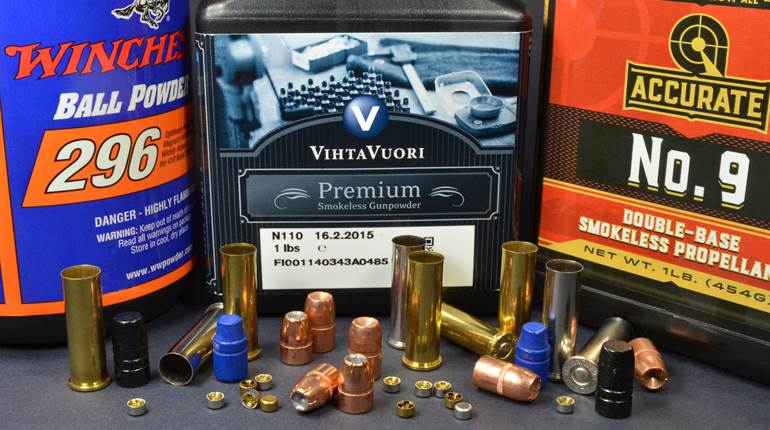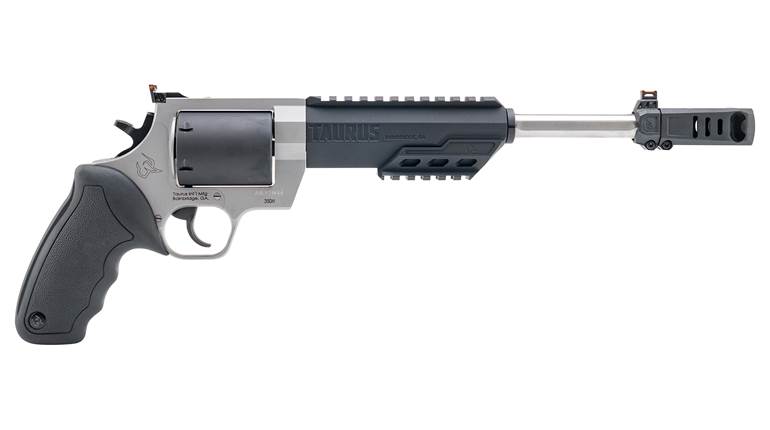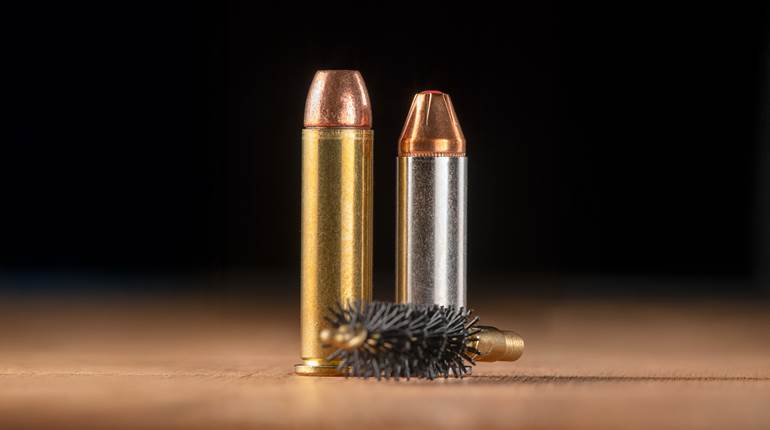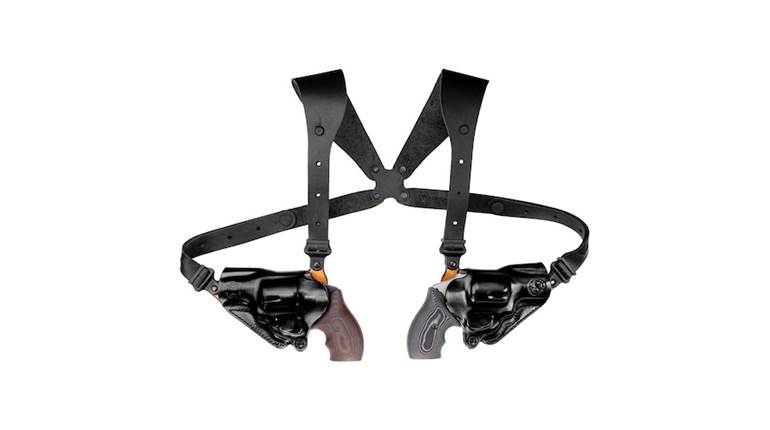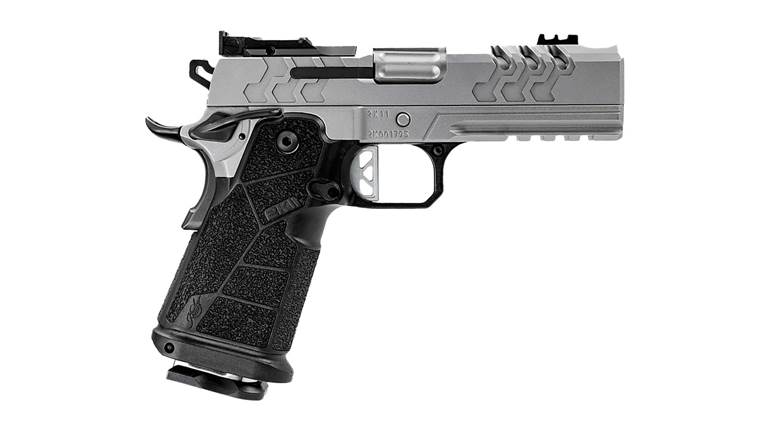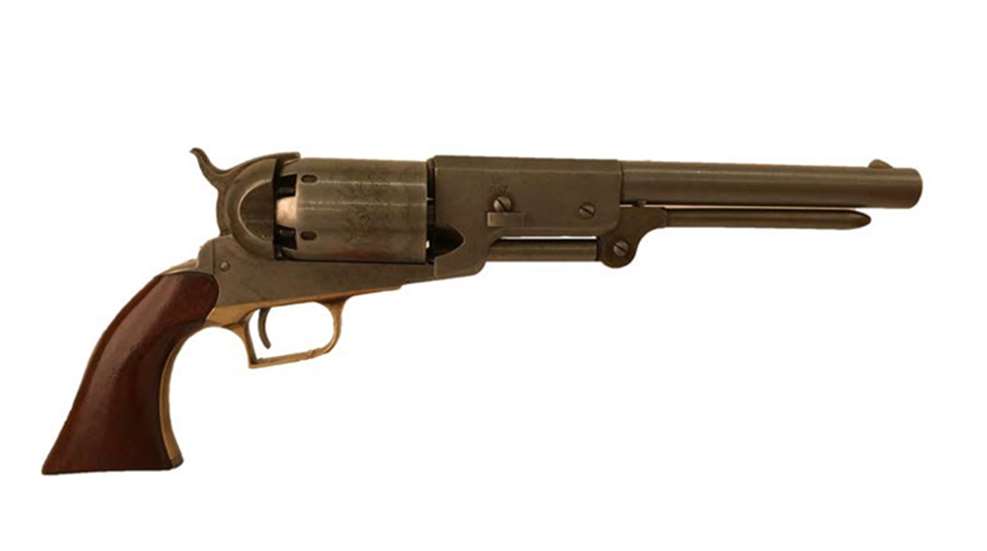
By 1844, the reputation of the Texas Rangers had already been established: Deadly. The Comanches raiders who had slaughtered their way north into Central Texas from the no-man’s lands of the Rio Grande certainly knew of it. And they knew that their return to Mexico would not go unchallenged by those stone-faced lawmen.
The Comanche though, had established their own reputation as fearless in battle, lethal with the bow, and arguably the finest horsemen to have ever lived. They’d developed flawless tactics: False charges drew wasted enemy fire and enabled them to swoop down upon their victims with overwhelming force when they were forced to dismount to reload their single shot Plains rifles. A dozen arrows could be released by a single charging warrior in the time it took a kneeling man to reload a rifle. So, when the scouts peered over the flinty ridge along Walker’s Creek in present-day Sisterdale, Texas, and saw only 15 Rangers circling a campfire, they raced back to their camp to tell of the advantage.
Before those scouts had even mounted their horses though, Captain John Coffee Hays had already begun speaking softly.
“I reckon’ you all saw that ...” he said to his men. “They’ll be back at sunrise, probably be 75 of them ... at least. And they’ll try to draw us apart; don’t let ‘em. Wait ‘til they form up and charge. We stay mounted. Now get some sleep.”
The next morning unfolded as predicted, and when the Rangers fired their single-shot rifles, the Comanches confidently advanced with a terrifying cry. Facing five-to-one odds on open ground, not a single lawman should have been left alive. But the Rangers had some five-to-one odds of their own. For the first time, the new Colt Paterson .36-caliber 5-shot revolver was used in the field—“one bullet for every finger.” Accounts predictably vary, but as many as 50 Comanches fell in those violent 15 minutes. The Rangers suffered only four casualties.
A new era for the Texas Rangers was dawning. But also, a new era in the American psyche.
One of those casualties on the Rangers’ side was Samuel Walker (pictured), gravely injured but who would survive. Walker came away with not just the unpleasant memory of what it felt like to be pierced by a 14-foot lance but also with the knowledge of what superior firepower could provide a vastly outnumbered group. 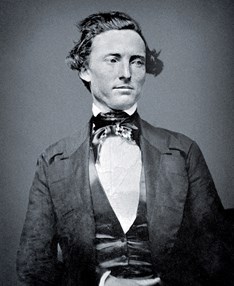
A few years later, in 1847, with Texas annexed into the United States and the United States at war with Mexico, Walker was commissioned into the U.S. Army. He would use this story and the lessons gathered from it as a sales tool while recruiting for soldiers in the northeast. He wanted his newly formed Regiment of Mounted Riflemen, due to see action in Mexico soon, to be armed with Colts instead of the old single shots they still carried. There were, however, none to be found. Samuel Colt, the daring designer behind the percussion cap 5 shooter that had probably saved Walker’s life, was out of the gun business. By a stroke of fate though, Colt had heard of Samuel Walker’s experience with his Paterson revolver and went to meet the hero while he was visiting New York. The two men hit it off and soon began making plans for a large government contract. Walker was so excited and adamant about his men carrying Samuel Colt’s firearms that he told him to have 1,000 of them ready for him in three months whether the government wanted them or not. He wanted them shipped directly to him because if the government decided to obstinately go in another direction, he was willing to buy them all for himself. “With improvements,” he said, “I think they can be rendered the most perfect weapons in the world for light mounted troops.” With this contract, Samuel Colt was able to revive his defunct firearms manufacturing business and cement his legacy as America’s gunmaker and a household name.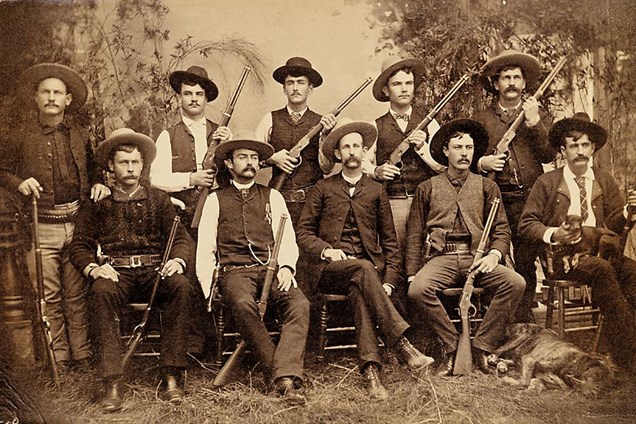
This group of Texas Rangers armed with Winchesters were following in the footsteps of Samuel Walker and previous generations of Texas Rangers.
The improvements that Walker suggested came from personal experience with the precedent-setting but otherwise fragile and complex Paterson model. It needed more power, and a lot. It needed to be tougher. And simpler. He envisioned a fixed trigger with a square guard to replace the folding open trigger of the Paterson. And it needed a standard loading lever attached beneath the barrel. What resulted was a single-action, 15”, 5 lb. repeating revolver “so big,” Colt would later say, “only a Texan could carry it.” It fired six .44 caliber balls over 60 gr. loads of black powder. It remained unrivaled in its power until the advent of the .357 Magnum in 1935.
Six months after the contract was signed, and near the end of the war, Captain Walker received a package in the field outside of Mexico City. Within the crate he found the first two Colts from his order. The new guns had been named in his honor and etched into the cylinders were scenes from the “Battle of Walker’s Creek.” He placed them in the two specially made saddle holsters and carried them into war. From horseback, his Walker Colts would take the place of his rifle, having the capability of striking down enemies with deadly and accurate force from close quarters or from up to 100 yards away. After Walker, the Ranger Captain from the Battle at Walker’s Creek, John Coffee Hays, was to be one of the first recipients.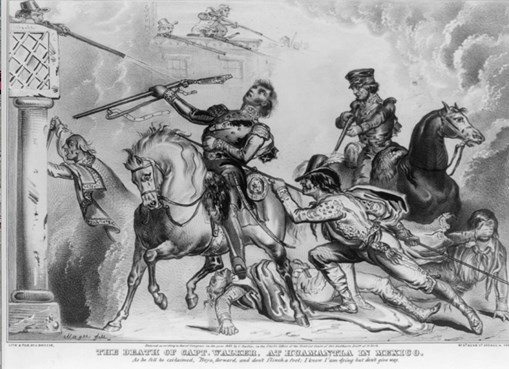
Wikipedia image
Walker, however, didn’t live long enough to field test them. Just days later, at the Battle of Huamantla, in which General Santa Anna would be captured for the second time by Rangers from Texas, Walker was shot in the back. His dying words were, “hand me my six shooter… .”
This six shooter, of which 1,100 were eventually made, saw little action but enough so that it became blatantly obvious to everyone that came in contact with it that nothing would ever be the same again. It had the power to stop virtually anything it was pointed at. It was now the standard and the future of handguns. A few evolutions in its design over the next quarter century would culminate in it becoming one of the most iconic symbols of American determination and independence, the Colt Single Action Army: The Peacemaker, forever known as “the gun that won the west.”
In honor and appreciation of the Texas Rangers, the Walker Colt, and the men behind it, Cimarron Arms is releasing an exact replica of the 1847 Walker Colt .44 black powder repeating pistol. Complete with company markings and issue numbers, the replica will be available for purchase (MSRP $668.75) later this year until 2023, the 200th anniversary of the fabled Texas Rangers. Five percent of all sales will go to the Former Texas Rangers Foundation located in Fredericksburg, Texas.
“The 1847 Walker was specifically designed to meet the hostilities of war and it put Samual Colt on the map as a gun maker,” Jamie Wayt, vice president of media for Cimarron Firearms, remarked. “The Texas Walker replica is meticulously produced. The attention to detail and craftsmanship make this replica a very special collector’s item.”
For more information on Cimarron Firearms and accessories, visit cimarron-firearms.com.












